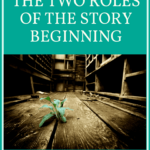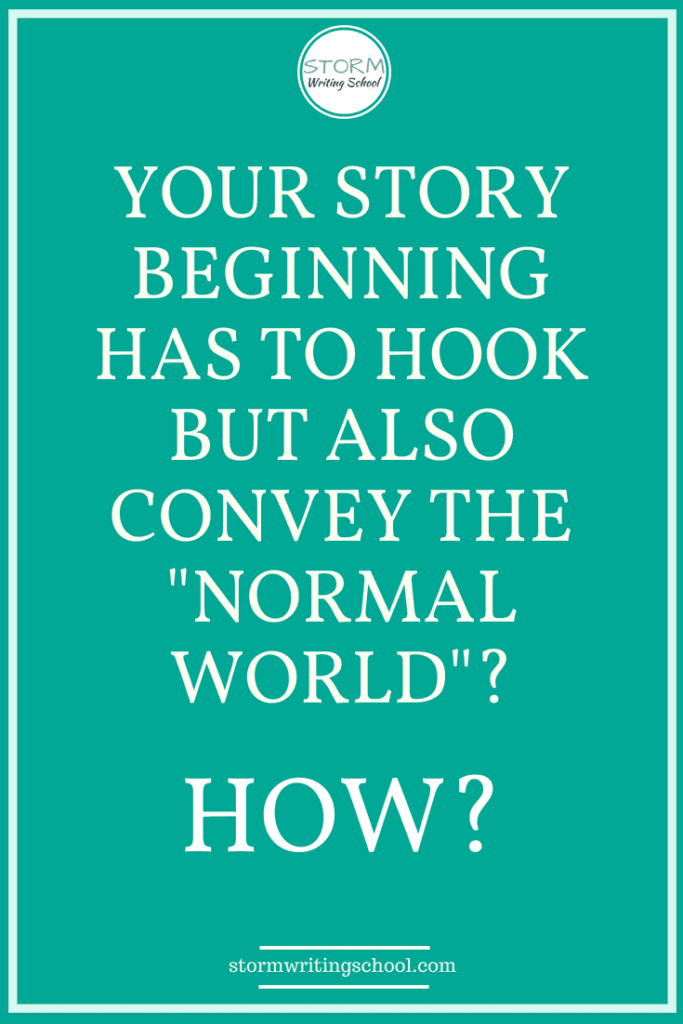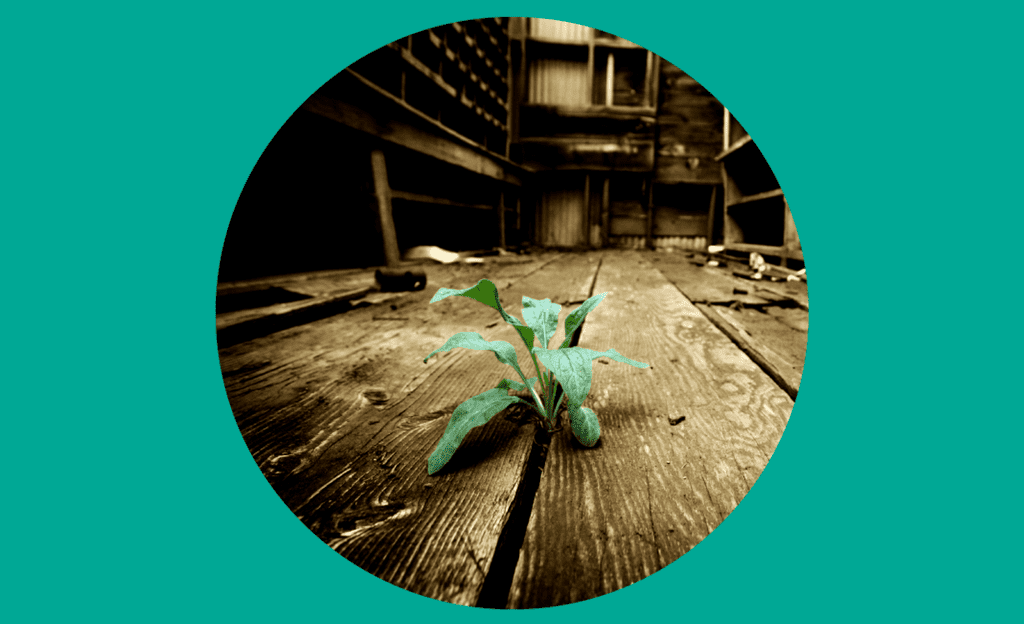The beginning of your story is obviously very important. It’s what readers peruse as they’re deciding whether or not to buy a book. It’s what agents look at for their snap judgments of a book’s marketability and interest. And if we’re to believe all the advice, the beginning must also encapsulate the book’s themes while introducing us to the main characters and the story world and the central conflict and the main character’s flaws and the list goes on.
It can be overwhelming.
But I’d like to both simplify and demystify beginnings a little.
Stop Rewriting It!
First of all, though, stop rewriting it. I can’t tell you how many writers I’ve worked with who have rewritten their beginning over and over again before finishing a first draft of the book. When you’re drafting, you write a placeholder beginning, then you write the rest of the book, then you come back and write the beginning last. It’s probably the last thing you should revise on your final revision, too.
So, really: Please relax! Don’t get hung up on the beginning . . . until the proper time to get hung up on it.
Hook and Stasis
In the meantime, yes, you do want a placeholder beginning. And it would be lovely if that beginning started the story in approximately the right spot. I know the feeling.
Here’s what’s so confounding about the beginning. It’s supposed to show a “stasis”—the world as it exists for the character prior to the exciting, tension-producing events of the story. But it’s also supposed to “hook” readers—through some kind of tension-producing event, one would surmise.
How can it do both?
Let me unpack that.
There are two roles for the beginning.
The structural role of the begining is to convey the initial state of the main character(s).
The functional role of the beginning is to hook the reader.

The Structural Role
What do I mean by “initial state”?
It’s the “before” that precedes the “after,” the “normal” before the “transformation.”
Any structural paradigm you read about will have a climax and a resolution at the very least. The climax is an ultimate confrontation or test; the resolution is the resulting state of existence for the characters of the story.
As Shawn Coyne says, “What the resolution moment does is tells the reader exactly what the climax of the Story MEANS. How the worldview has shifted.”
For me, the key concept there is the shift.
Most stories will have a main character who is transformed in some way, but even those stories that have steadfast, unchanged protagonists have them existing in a changed world by the end of the story (right, James Bond?).
The beginning needs to show us what’s being shifted from. That’s its structural role.
Some paradigms call the beginning the “stasis” or the “normal world,” which sound very boring. A better label for the beginning may be “pre-shift” or “pre-transformation” or “pre-movement.”
(And this is why you can’t really write the beginning until you know exactly where your story ends. The beginning exists in relation to the ending’s shift.)
The Functional Role
Of course, you want to hook the reader. So your four-page description of the idyllic village of Queenshire—though fascinating, no doubt, to you, its creator—is not going to fly. You want to show us the current world, but that doesn’t mean a problem-free world.
In Tomi Adeyemi’s breakout YA novel, Children of Blood and Bone, we witness several confrontations that illustrate the world as Zélie, the protagonist, knows it. Pre-shift.
Zélie wants to spar with another girl, Yemi; the two of them are part of a larger group of girls being secretly trained to fight by a woman named Mama Agba. But then, in the middle of the tense fight between Zélie and Yemi, there’s a raid: some guards come into the village and Mama Agba’s girls quickly transform their sparring hut into a sort of textile workshop, and all the girls sit at their sewing stations as the guards enter the hut and demand more taxes from Mama Agba.
See? Plenty of conflict there. Lots to hook us. But it’s still depicting the “normal world.”
To fulfill the functional role of the beginning you need either dramatic tension or lots of intrigue tension. (More on that distinction in my free ebook on tension.)
Beginning Plot Points
The initial plot points of a story can get confusing. Different resources use terms in different ways, but you’ll sometimes hear that you don’t need an inciting incident until 10-12% of the way through a story. I don’t disagree with that assertion, but lest you believe that not much needs to happen before that point, let me propose a way of thinking about the beginning plot points.
Foundational Problem
Before page 1 of the story, there’s a problem: an oppressive empire has made life miserable for the entire galaxy; AI has enslaved humanity and feeds them a simulated reality called the matrix; the protagonist’s son is deathly ill; the protagonist has endured a series of failed relationships and feels she will never find love.
This page-zero problem is already happening. It’s part of the “normal world”/“stasis” of the story you’re writing.
Inciting Incident
The inciting incident is the first event that pushes (or pulls) the main character to change their life in some way. In the hero’s journey, the inciting incident is the call to adventure. But the main character can refuse that call. That is, this incident is not an irreversible threshold. Things could plausibly remain in the “normal world.”
Door #1 (The Threshold)
This plot point, sometimes called simply Plot Point #1, is an irreversible threshold. There’s no going back from this one. The main character is now thrust out of the normal world entirely. I like James Scott Bell’s label for this as Door #1 (Bell says that a story structure is minimally a disturbance and two doors).
Some Examples
Star Wars (the original one, A New Hope)
- Foundational Problem: The empire is gaining power and using illegal methods to do so
- Inciting Incident: Luke receives the distress call from Leia
- Door #1: Luke discovers his aunt and uncle and their farm burned
Hunger Games
- Foundational Problem: Oppressive society; poor districts; murder as sport
- Inciting Incident: Katniss’s sister is chosen as a tribute and Katniss takes her place
- Door #1: During the parade of tributes, Katniss kisses Peeta to encourage the impression that they are allies
Harry Potter and the Sorcerer’s [Philosopher’s] Stone
- Foundational Problem: Harry’s an orphan and lives a miserable life with the Dursleys
- Inciting Incident: Harry receives letters of invitation to Hogwarts
- Door #1: Harry arrives at Hogwarts
The Matrix
- Foundational Problem: AI has enslaved humanity
- Inciting Incident: Neo gets contacted by Morpheus
- Door #1: Neo takes the red pill and is reborn into the real world
Don’t Get Hung Up on the Labels
Now, you’ll find different language among different sites/books for these things. Dramatica labels Darth Vader’s illegal boarding of Princess Leia’s ship the inciting incident; Donald Miller says, “The inciting incident is . . . the doorway through which [your characters] can’t return.” Those assertions do not play well with what I’m saying above. (Dramatica’s inciting incident is the foundational problem in my parlance here; Donald Miller seems to be describing what I prefer to label Door #1.)
But I’m not wedded to my labels. Change them if it suits you to do so. It’s about the concepts. Knowing about the foundational problem will allow you to think more clearly about a hook. In relation to the inciting incident and Door #1, though, that hook is really just the “normal world” or “stasis.” The story itself gets underway with the inciting incident and Door #1.
Pair with my aggregate structural paradigm and/or with my blog/video on escalating complications. And the Tension Lab course will help you understand how to create tension, including in the beginning of your story.

SaveSave
SaveSave
SaveSave
SaveSave
SaveSave








6 Responses
Structural and Functional. I have writ that in bold, black toner and taped it to the insides of my eyelids. That is absolutley the best –ever, description, disambiguation of The Opening I’ve ever scene(seen).
Thanks, Dan! Glad it was useful.
Hi Tim,
It’s so funny I should stumble upon this article as it is one of the very questions I submitted for your upcoming workshop the first weekend of May. I’ve heard wonderful things and even just from reading this, I’m sure I’ll get loads out of it. This lays the whole thing out so clearly. I wish I’d found your work earlier. Very excited to meet you in person.
Thank you!
Excited to meet you, too!